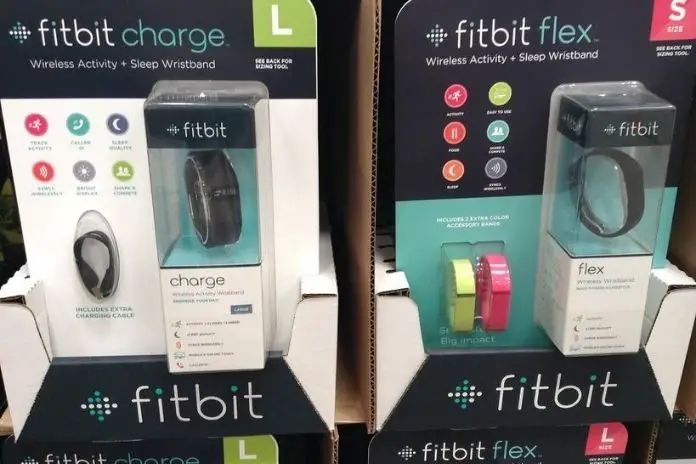
In today’s modern world, experts are always trying to figure out how to use advances in technology to keep people healthy. They never stop improving the current ones and coming up with new ways how to fuse the two worlds.
A perfect example of this is activity trackers, which allow us to track our activity, cholesterol levels, and various information significant in staying fit and healthy. Among the trackers today, one of the brands that stand out is FitBit.
Offering devices engineered and designed to give users an idea of what is going on with the body allows users to make the necessary adjustments to be healthy and fit.
Does a FitBit battery wear out? Of course, the obvious answer will be YES! Like any other battery, FitBit batteries are built with a specific number of charging cycles that measure its lifespan. Over time, as these batteries undergo the charge to discharge cycles, the amount of energy they can store is gradually reduced.
Once the batteries have reached the specified amount of charging cycles, they are no longer capable of receiving and storing energy. When this happens, the batteries are considered as dead.
What raises a lot of questions regarding FitBit batteries is that the company does not give a conclusive value on how long the cells they use to power their devices will last. They are only providing the battery life, which FitBit defines as the duration of time their devices will operate from a fully charged state.
They only provide the runtime of their trackers, and they offer less information about the batteries they use. However, answering the question based on logic, technicality, and facts, regardless of what FitBit device it is, the battery that powers it wears out until it dies.
I’m sure that whatever reason you brought you here, reading this article has something to do with the life expectancy of FitBit batteries.
Perhaps you are looking for credible and reliable information that will tell you how long these cells will last since FitBit hasn’t disclosed details about it. That’s what also bothering me, which leads me to invite you to join me in a quest to find the real deal.
Type of Batteries Powering Various FitBit Devices
FitBit devices such as activity trackers and smartwatches are equipped with small yet powerful rechargeable cells. Although it is considered one of the top companies in the industry due to its trusted products, FitBit discloses limited information about their batteries.
However, the kind of battery that powers their devices depends on the unit, and they are claiming that most of their trackers and watches use non-replaceable cells.
According to many battery experts, most of the FitBit devices like the trackers and the watches are powered by a rechargeable battery with lithium-polymer chemistry.
All of them are sealed non-removable batteries except the FitBit Zip, the only device with a replaceable battery. It is a tracker that uses a 3-volt CR2025 coin-type battery that lasts from four to six months.
As for the non-removable batteries powering most of the smartwatches and activity trackers of FitBit, the information about their life expectancy is undisclosed, but it is based on what FitBit users share their experiences on forums.
A huge percentage of them say that their batteries start failing after two to three years, with daily use. That led to a logical estimate that the cells powering most FitBit devices can last about three years with daily use.
The Average Battery Life of Each Device According to FitBit
FitBit offers a plethora of health-related devices. With the selection of smartwatches they have, you can pick the right model that compliments your style. Fitness and health-conscious individuals can also choose from FitBit’s plethora of activity trackers to keep them in check with the significant details related to their fitness.
Choosing the right type of device that will perfectly suit your lifestyle, activities, and needs. A significant factor that you have to consider is the battery life or runtime of the device.
This information will ensure that the device you will pick can track every information you need to know. It will allow you to determine what you need to do to stay fit and be healthy.
Here’s a list of each FitBit device and the battery life they offer.
● Versa 2: This smartwatch is able to run for six or more days, depending on the features used. If the option that keeps its display always on, it will only run for three days, max.
● Original and Lite Edition Versa: Both of these watches are able to operate for four days on a single 100% charge. It can even last longer, depending on the features used.
● Ace Series, Alta, and Blaze: All of these three FitBit devices are equipped with batteries designed to run for five days. But keep in mind that battery life is affected by the features used.
● Inspire Series, Ionic, Charge 2, and Flex 2: Like the previous devices on the list, all of these devices are capable of running for five days. However, if the power-demanding features are used, the battery life will be reduced. For the Ionic, the usage of GPS also plays a huge role. Regularly using it would slightly decrease its runtime, while using it continuously will drain its battery a lot faster, unable to complete a day.
● Alta HR, Charge 3, and 4: Considered as the most reliable modules, these devices can run up to seven days with a fully charged battery. But in the case of Charge 4, battery life will also be affected by how its built-in GPS is used. Regularly using it will reduce its runtime to four days, while leaving it on or consistent usage will drop its runtime down to ten hours as max.
● FitBit One: The first tracker from FitBit has a battery capable of powering the device for two weeks. Not bad considering that it’s the oldest.
● Zip: FitBit’s only device that uses a replaceable battery, the Zip has a runtime of at least six months, and then its battery can be replaced with a new one that again gives it the six-month battery life.
There you go! The listed above are the health and fitness-related devices offered by FitBit along with the information regarding their battery life.
If you are to purchase one, make sure to think about the main purpose of getting a FitBit. It will allow you to choose the device that best suits your needs.
Extending the Battery Life of FitBit: Tips from the Experts
Now that you’ve seen how long each FitBit device can run with a 100% fully charged battery. It is also best for you if you can maximize one full charge by conserving the energy within the batteries.
This will make the FitBit devices energy efficient, where every bit of charge the devices consume will be used for the right purpose.
Here are some proven and tested tips from seasoned FitBit users and experts on how you can get the most from the battery life FitBit devices.
1. Never charge a FitBit device when the ambient temperature is below 0°C or 32°F and above 45°C or 113°F. This will wear out the batteries faster.
2. Avoid overcharging a FitBit device, regardless of its kind. Keep in mind that cells with lithium-based chemistry don’t tolerate overcharging.
3. For devices that allow screen brightness adjustment, dim the screen up to the level where it’s not too bright and not too dark. Screen brightness consumes a lot of power.
4. Set your device where it will not activate the screen every time your wrist turns. This will use a lot of energy every twirl of your wrist.
5. Remember to charge a FitBit tracker up to 100% state every six months and charge watches up to 100% state at least once a year. This is to keep the battery checked.
Final Thoughts
Although FitBit disclosed limited information regarding the batteries, they use to power their selection of watches and trackers.
By just based on facts, the answer to the question earlier is a big YES! All batteries wear out over time and eventually lose their ability to store energy; this includes FitBit batteries.





